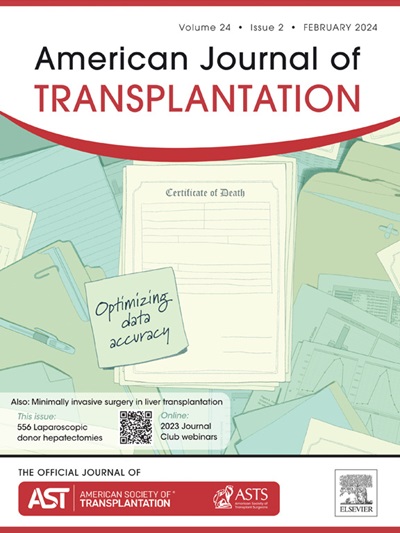小鼠正位肺移植模型:遗传错配程度的全面概述和慢性肺移植功能障碍的组织病理学见解。
IF 8.9
2区 医学
Q1 SURGERY
引用次数: 0
摘要
目前,与其他实体器官移植相比,肺移植的疗效仍然较差。肺移植后存活受限的一个主要原因是慢性肺移植功能障碍(CLAD)。为了找到适当的治疗方法,人们开发了许多动物模型来研究 CLAD。近年来,小鼠正位肺移植模型得到了进一步优化。然而,供体和受体小鼠之间的基因错配程度各不相同,有单一基因错配、轻度基因错配、中度基因错配和重度基因错配。本综述旨在重新评估现有的小鼠错配模型,并提供一个全面的概述,特别关注其最终的组织病理学表现。这对充分利用该模型并根据具体研究需要对其进行定制至关重要。本文章由计算机程序翻译,如有差异,请以英文原文为准。
Murine orthotopic lung transplant models: A comprehensive overview of genetic mismatch degrees and histopathological insights into chronic lung allograft dysfunction
Currently, lung transplantation outcome remains inferior compared to other solid organ transplantations. A major cause for limited survival after lung transplantation is chronic lung allograft dysfunction. Numerous animal models have been developed to investigate chronic lung allograft dysfunction to discover adequate treatments. The murine orthotopic lung transplant model has been further optimized over the last years. However, different degrees of genetic mismatch between donor and recipient mice have been used, applying a single, minor, moderate, and major genetic mismatch. This review aims to reassess the existing murine mismatch models and provide a comprehensive overview, with a specific focus on their eventual histopathological presentation. This will be crucial to leverage this model and tailor it according to specific research needs.
求助全文
通过发布文献求助,成功后即可免费获取论文全文。
去求助
来源期刊
CiteScore
18.70
自引率
4.50%
发文量
346
审稿时长
26 days
期刊介绍:
The American Journal of Transplantation is a leading journal in the field of transplantation. It serves as a forum for debate and reassessment, an agent of change, and a major platform for promoting understanding, improving results, and advancing science. Published monthly, it provides an essential resource for researchers and clinicians worldwide.
The journal publishes original articles, case reports, invited reviews, letters to the editor, critical reviews, news features, consensus documents, and guidelines over 12 issues a year. It covers all major subject areas in transplantation, including thoracic (heart, lung), abdominal (kidney, liver, pancreas, islets), tissue and stem cell transplantation, organ and tissue donation and preservation, tissue injury, repair, inflammation, and aging, histocompatibility, drugs and pharmacology, graft survival, and prevention of graft dysfunction and failure. It also explores ethical and social issues in the field.

 求助内容:
求助内容: 应助结果提醒方式:
应助结果提醒方式:


